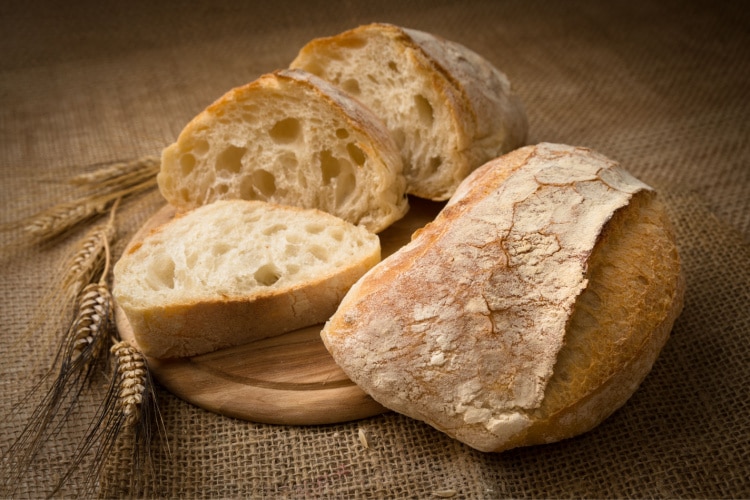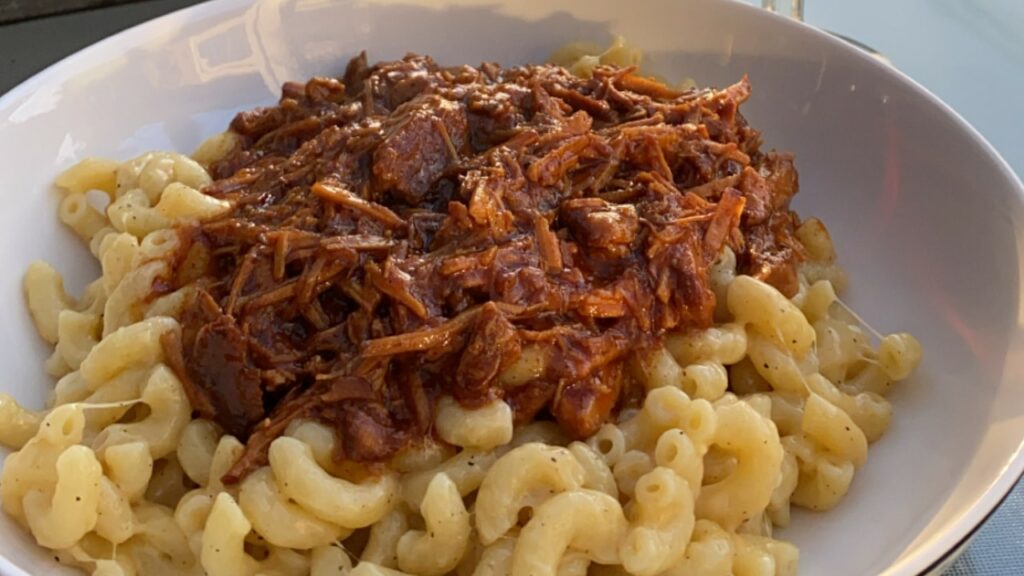Sausages easily hold the fort as the most popular and adored delicacy among the many mouthwatering meat dishes available across the globe.
You may find all kinds of sausages in just about any place in the Western world (and abroad), but in this post, we’ll concentrate on two of them: Italian sausage and pork sausage.
Sausages derive from the Latin word “salsus” which essentially means “salted.” This relation is still valid today since seasoning is a crucial component of making sausages, and in our case, it’s what distinguishes Italian sausage from pork sausage.
You can find out about each distinction between Italian and pig sausages in this post and discover which one is healthier and whether or not they can be substituted for one another.
Difference Between Italian Sausage vs. Pork Sausage

Pork is the ingredient used to make both Italian and pork sausages, but it is in fact the herbs and spices mixed with the meat that separate the two sausages.

The specific component that distinguishes Italian sausage from pork sausage and all other sausage variations is fennel. This seasoning alters the flavor of the sausage, making all the difference.
But before we learn some more, here’s a fascinating fact: sausages were previously known as bangers! During WWII, sausages were dubbed bangers because they burst when cooked. This was mostly owing to their high water content.
Now let’s explore each distinction carefully.
Origin
When comparing their origin, Italian sausage is older than pork sausage, if not the oldest among sausages.
The earliest record of an Italian sausage, originally called “lucanica,” comes from the Roman historian Marcus Terentius Varro, who wrote of putting spiced and salted meat inside pig intestines around the first century BC.
On the other hand, the classic breakfast pork sausage originated in America as a way for farmers to get the most out of their pigs. They realized they could use the ground-up, spiced meat from the chops and crumbs of pork to make a high-protein breakfast.
Formula
The process of making Italian sausage and pig sausage is somewhat similar and doesn’t require a lot of ingredients, but each one is essential to their delicious singularity.
Let’s start with the meat. Pork sausages are made of pork, typically from a pig’s shoulder or leg. Italian sausage also comes from pork, more specifically, from a shoulder muscle known as the boneless pork butt.
The seasoning is what sets the two sausages apart. The traditional formula for Italian sausage includes fennel seeds, salt, pepper, coriander, basil, sweet paprika, garlic, and red pepper flakes. Pork sausage, on the other hand, combines nutmeg, salt, black pepper, sage, cayenne pepper, paprika, and garlic, among others.
Once minced and seasoned, it’s time for the paste to get stuffed into casings. This procedure is rather similar for both sausages. Italian and pork sausages are made of three types of casings: natural, which is the oldest way and makes a casing from the intestines of a pig; collagen, which comes from animal skins; and cellulose, which is a vegan alternative derived from plant cell walls.
Flavor
Italian sausage is undoubtedly the victor when it comes to which sausage has a more mouthwatering flavor.
Fennel seeds are the secret to the irresistible flavor of Italian sausage, giving it its somewhat earthy and sweet flavor. The garlic comes as a close second.
On the other hand, pork sausages are renowned for their spicy, salty, and somewhat tangy flavor. Both pork and Italian sausages come in sweet, mild, and spicy varieties. The ingredients are somewhat similar, except that hot sausages may include chili peppers.
Italian Sausage vs. Pork Sausage Comparison Table
| Category | Italian Sausage | Pork Sausage |
| Origin | Italy | USA |
| Meat | Pig’s shoulder (boneless pork butt) | Pig’s shoulder or leg |
| Seasoning | Fennel seeds, salt, pepper, coriander, basil, sweet paprika, garlic, and red pepper flakes. | Nutmeg, salt, black pepper, sage, cayenne pepper, paprika, and garlic |
| Casing | Natural, collagen, cellulose | Natural, collagen, cellulose |
| Flavor | Sweet and earthy | Salty, peppery, and tangy |
| Varieties | Sweet, mild, hot | Sweet, mild, hot |
| Recipes | Antipasto, stews, polenta, sandwiches | Eggs, sauteed veggies, pasta, potato salads |
Nutritional Content Breakdown: Which One Is Healthier?
If we look at the nutritional table below, we can see that Italian sausage and pork sausage are quite similar.
Pork sausage is slightly higher in calories, sodium content, cholesterol, and fat, thus making it the less healthy option out of the two. However, since their differences are minimal, choosing either one of them won’t make much of a difference health-wise.
Italian Sausage vs. Pork Sausage: Nutritional Profile
| Category (100g) | Italian Sausage | Pork Sausage |
| Calories | 322 | 325 |
| Carbs | 2.2g | 1.4g |
| Fat | 26g | 27g |
| Saturated fat | 9.2g | 8.8g |
| Cholesterol | 80 mg | 86 mg |
| Sodium | 766 mg | 814 mg |
| Potassium | 310 mg | 342 mg |
| Protein | 18g | 19g |
| Fiber | 0g | 0g |
| Sugars | 1.5g | 1.1g |
| Vitamins & Minerals | ||
| Vitamin A | 22 mcg | 28 mcg |
| Calcium | 12 mg | 9 mg |
| Thiamin | 0.310 mg | 0.256 mg |
| Vitamin B6 | 0.343 mg | 0.195 mg |
| Niacin | 5.730mg | 6.119 mg |
| Phosphorous | 145mg | 149 mg |
| Copper | 0.07mg | 0.07mg |
| Vitamin C | 0.0mg | 0mg |
| Iron | 1.29 mg | 1.20 mg |
| Riboflavin | 0.242 mg | 0.176 mg |
| Vitamin B12 | 1.06 mcg | 0.98 mcg |
| Magnesium | 19 mg | 16 mg |
| Zinc | 2.41 mg | 2.45 mg |
Can I Substitute Italian Sausage for Pork Sausage & Vice Versa?
Yes, you can! Given that both are prepared from hog flesh, pork sausage and Italian sausage are the ideal substitutes for one another.
The pork sausage may be used in any dish that calls for Italian sausage, however, with slight differences in flavor. Pork sausage is slightly salty, peppery, and tangy, but fennel gives Italian sausage its unique sweet and woody flavor.
Include fennel seasoning in your recipe if you wish to use pork sausage instead of Italian sausage. If you want to swap Italian sausage for pork, include seasonings that take part of the pork sausage recipe, like nutmeg and black pepper.
Italian Sausage and Pork Sausage Recipes
The wonderful thing about Italian and pig sausages is that they complement a wide range of tastes! However, some dishes pair particularly well with the salty and tangy flavor of pork sausage and the sweet and earthy flavor of Italian sausage. Here are some of them.
Italian Antipasto

A pasta salad with the ideal balance of tanginess, spiciness, creaminess, and delightful sweetness. Italian antipasto usually consists of tomatoes, mozzarella, Italian sausage, olives, minced garlic, sliced onions, olive oil, vinegar, and tons of seasoning.
Polenta

A simple side dish with a creamy and buttery texture and corn flavor. The Italian sausage, with its burst of sweetness, meatiness, and fattiness, is the go-to choice for enhancing the polenta’s flavor.
Fava Bean Stew

Adding Italian sausage to a heated fava bean stew is a go-to choice to keep warm on chilly days. The sausage, paprika, and cumin add a lot of smokey aromas to the stew, whereas the freshly squeezed lemon juice and cilantro bring some zest.
Italian Bread

Make a wonderful sandwich by combining your Italian sausage with crusty Italian bread. There are plenty of filling options, but if you want to go really Italian, pesto is a fantastic choice!
Sauteed Onion Pork Sausages

A timeless combination is grilled pork sausages with sautéed peppers and onions. The sweet notes of the two veggies melt with the smokiness of the sausage and together make one sweet, peppery, and meaty roasted heaven!
Porky Mac n’ Cheese

Pasta, cheese, and sausage are a match made in heaven. The pasta’s richness and the creaminess of the cheese, combined with the smokiness of the meat, provide the most incredible umami flavor in this porky mac n’ cheese.
Potato Salad

Nothing makes a dinner more enjoyable than a cold, creamy potato salad. The traditional recipe includes onions, apple cider vinegar, salt, and pepper, with the tang of the pork sausage nicely balancing the savory taste of the potatoes.
Scrambled Eggs

Sausages and eggs transform anybody into a morning person. They add a savory and spicy touch to breakfasts and even brunches. You can pair them with literally anything, from onions and mushrooms to cheeses like white or yellow American cheese[1] or mozzarella.
Conclusion
That ends our journey on the differences between Italian and pork sausages.
Taking everything into consideration, we can say that Italian sausage is of great origin, favored by the Romans since ancient times. The traditional salty and peppery flavor of the pork sausage is overshadowed by the sweet and earthy “fennel” flavor of the Italian sausage, and the nutritional value makes the Italian sausage slightly more heart-healthy.
However, if you don’t try both of these sausage varieties, you’ll never experience their differences in the proper way. Therefore, let your taste buds decide on the tastiest of the two. Bon appetit!
link to white vs yellow American cheese







